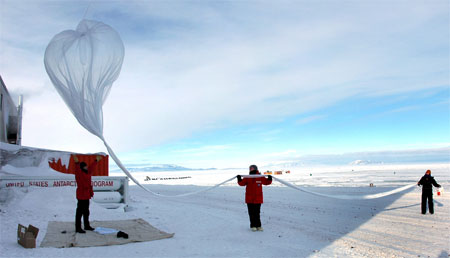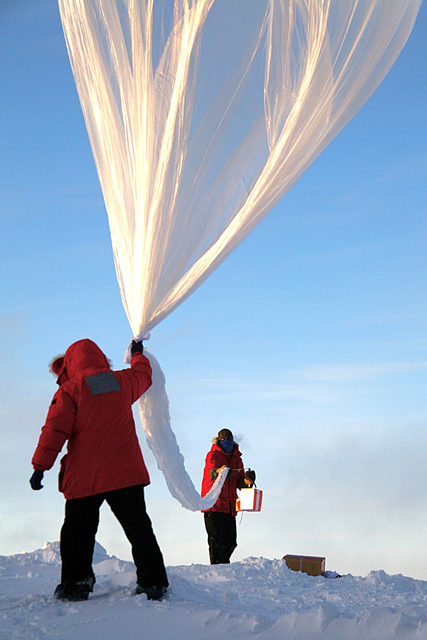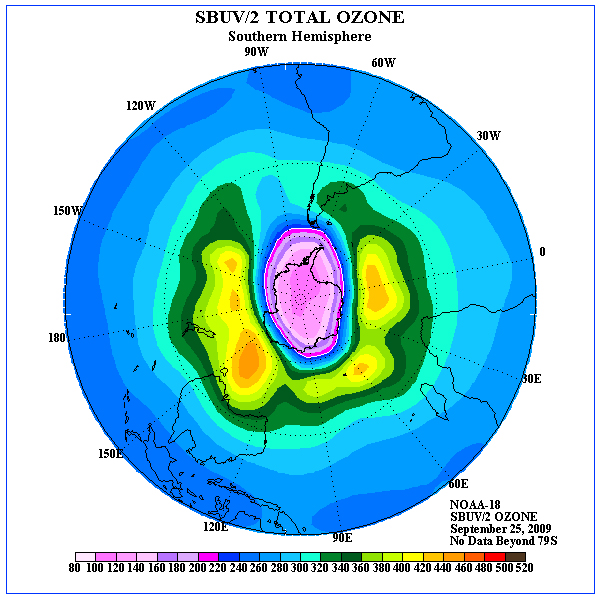Ozone hole 2009Latest depletion event 10th largest in last 30 yearsPosted November 27, 2009
The size of the annual ozone hole over Antarctica peaked in late September at 23.8 million square miles, slightly smaller than the North American continent, according to a news release from the National Oceanic and Atmospheric Administration (NOAA) That ranks as the 10th largest since satellite measurements began in 1979. Ozone over South Pole Station The ozone layer in the Earth’s stratosphere, between 10 and 30 kilometers above the ground, helps shield the planet from harmful ultraviolet radiation. Human-produced compounds known as chlorofluorocarbons, or CFCs, release ozone-destroying chemicals into the atmosphere responsible for the depletion. Extreme cold, ice cloud formation in the stratosphere, and a pattern of rapidly circulating air, called the polar vortex, make the ozone layer over Antarctica much more vulnerable to CFC-destruction than anywhere else on the planet. International agreements have strictly limited the use of CFCs since the early 1990s. Scientists predict the ozone hole will recover by the end of the century. NOAA scientists working from the Atmospheric Research Observatory at the South Pole Station launch balloons to measure ozone vertically at least once a week, and more frequently in the austral spring when the polar vortex forms. Another group led by Terry Deshler Work on the ground at South Pole can be difficult, with temperatures approaching minus 70 degrees Celsius (minus 100 degrees Fahrenheit). NOAA engineer Patrick Cullis and NOAA Corps officer Marc Weekley have nearly completed a yearlong assignment there to collect atmospheric data and keep instruments operating. “It’s actually been hardest to launch during the long dawn before sunrise,” Cullis said in a NOAA press release. “The landscape starts to brighten, but there are no shadows to warn you of the large clumps of snow left in your path by the movement of bulldozers. “Plus, this year, the polar dawn brought an intense 35-knot storm lasting over a week. Even during lulls in the storm, launching large plastic balloons was like running a 50-meter dash in soft snow. My lungs would burn from the combination of 10 pounds of gear, soft snow, and thin air.” Scientists in Antarctica, including teams from NOAA and the University of Wyoming, have been measuring atmospheric ozone since 1986. NSF-funded research in this story: Terry Deshler, University of Wyoming, Award No. 0839124 |



For USAP Participants |
For The Public |
For Researchers and EducatorsContact UsU.S. National Science FoundationOffice of Polar Programs Geosciences Directorate 2415 Eisenhower Avenue, Suite W7100 Alexandria, VA 22314 Sign up for the NSF Office of Polar Programs newsletter and events. Feedback Form |




